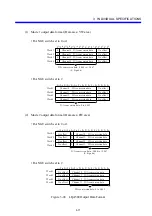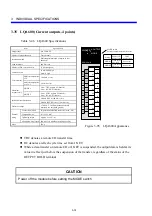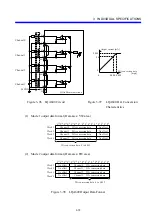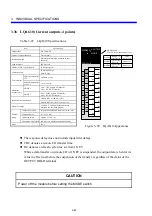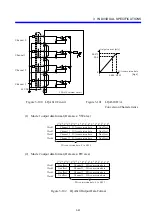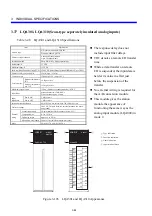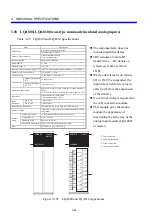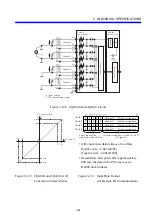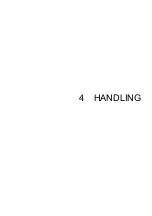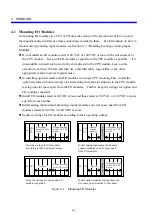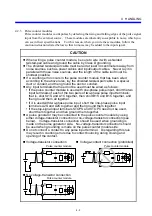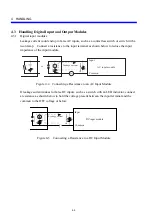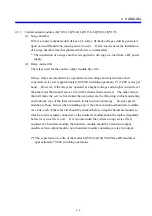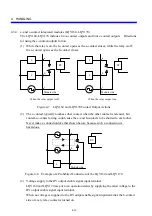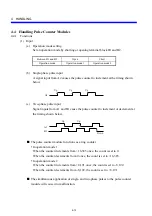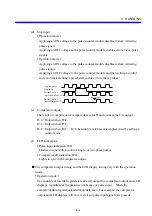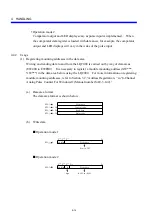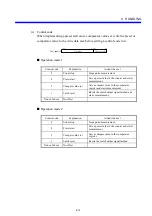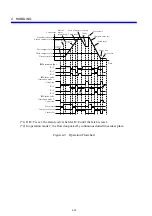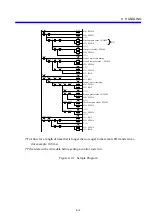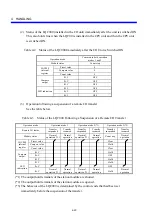
4 HANDLING
4-5
4.2.3 Pulse counter modules
Pulse counter modules count pulses by detecting the rising and falling edges of the pulse signal
input from the external source. These modules are inherently susceptible to noise, which you
can see in their specifications. For this reason, when you wire these modules, follow the
caution instructions listed below so that no noise may be added to the input signal.
CAUTION
z
When wiring a pulse counter module, be sure to wire it with a shielded
twisted-pair cable and ground the cable by Class D grounding.
z
The shielded twisted-pair cable must be laid at least 30 centimeters away from
noise sources, such as power cables and input/output cables. Never lay it in
parallel with those noise sources, and the length of the cable laid must be
shortest possible.
z
If a counting error occurs in the pulse counter module that has been wired
according to the above rules, lay the shielded twisted-pair cable in a special
duct or conduit, and then ground the duct or conduit.
z
Any input terminals that need not be used must be wired as follows:
y
If the pulse counter module is used with one-phase pulse input, short the two
input terminals of each of the two pairs of two-phase pulse input terminals;
that is, short A1S and A1C together, then short B1S and B1C together, and
then ground them all together.
y
If it is used with two-phase pulse input, short the one-phase pulse input
terminals A2S and A2C together and then ground them together.
y
If the stop-signal input terminals STOPS and STOPC need not be used,
short them together and then ground them together.
z
A pulse generator may be connected to the pulse counter module by using
either voltage-transistor connection or no-voltage-transistor connection (see
below). Voltage-transistor connection should be used when grounding is
made on the pulse generator side. No-voltage-transistor connection should
be used when grounding is made on the pulse counter module side.
z
Do not connect a contact to any pulse input terminal. Disregarding this rule
may result in counting errors due to contact bouncing during closing and
opening of the contact.
Voltage-transistor connection
Voltage-contact connection (prohibited)
No-voltage-transistor connection
S
C
Pulse counter module
S
C
Pulse counter module
S
C
Pulse counter module
Summary of Contents for S10mini LQS070
Page 1: ......
Page 2: ......
Page 19: ...This Page Intentionally Left Blank ...
Page 30: ...1 BEFORE USE ...
Page 37: ...This Page Intentionally Left Blank ...
Page 38: ...2 KINDS AND SPECIFICATIONS OF I O MODULES ...
Page 57: ...This Page Intentionally Left Blank ...
Page 58: ...3 INDIVIDUAL SPECIFICATIONS ...
Page 143: ...This Page Intentionally Left Blank ...
Page 144: ...4 HANDLING ...
Page 179: ...This Page Intentionally Left Blank ...
Page 180: ...5 HANDLING I O DATA ON J NET ...
Page 186: ...6 HANDLING I O DATA ON D Station ...
Page 191: ...This Page Intentionally Left Blank ...
Page 192: ...7 MAINTENANCE ...

